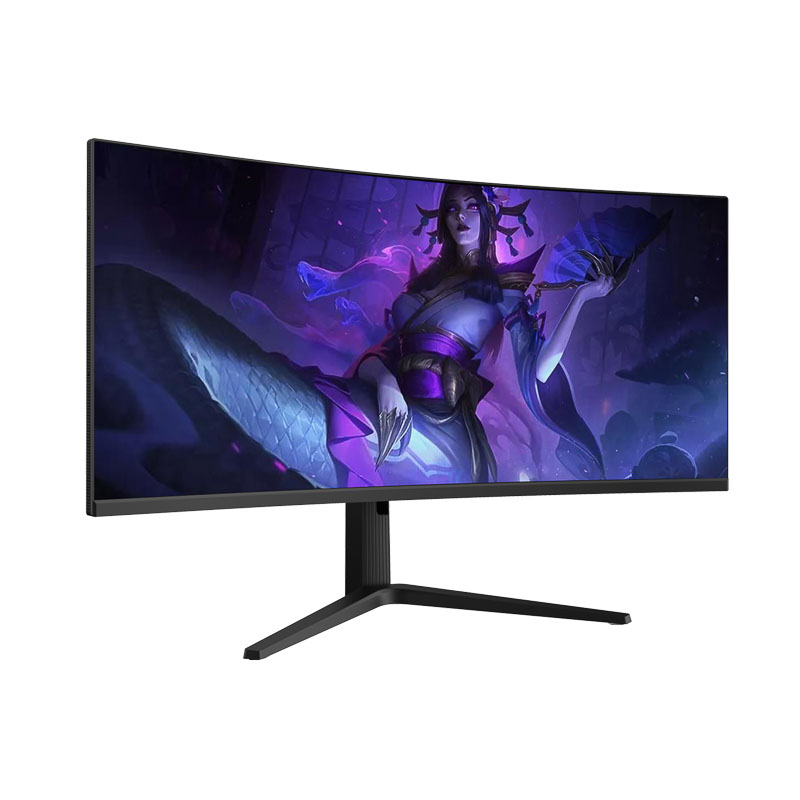An ultrawide curved gaming monitor offers a broader field of view and a more immersive experience than traditional flat screens. By wrapping the display around the content, it reduces eye strain and enhances peripheral vision, making gameplay more engaging and comfortable.
This type of monitor improves gaming performance by providing clearer details across a wider screen without the need for multiple displays. Its curved design matches the natural shape of the human eye, which helps create a more natural and less distorted image.
Gamers who prioritize both visual immersion and functional space will find an ultrawide curved monitor a practical upgrade. It combines extensive screen real estate with ergonomic benefits, supporting longer gaming sessions without discomfort.
Key Features of Ultrawide Curved Gaming Monitors
Ultrawide curved gaming monitors combine several technical specifications to enhance gaming performance and immersion. Important aspects include screen dimensions, curvature radius, refresh rates, and resolution, all tailored to deliver smooth visuals and a broad field of view.
Screen Size and Aspect Ratio
Ultrawide gaming monitors typically range from 29 to 49 inches diagonally. The most common aspect ratios are 21:9 and 32:9, significantly wider than the standard 16:9. This wider format allows gamers to see more of the game world without needing multiple displays.
A larger screen with a wide aspect ratio improves peripheral vision in games, making it easier to spot opponents or environmental details. However, screen size should fit the user’s desk space and viewing distance to avoid eye strain.
Curvature and Immersive Experience
Curvature is measured by the radius (e.g., 1500R, 1800R). Lower numbers indicate a more pronounced curve. This curvature matches the natural curve of the human eye, reducing distortion at the edges of the screen.
A well-designed curve enhances immersion by wrapping the image around the viewer’s field of vision. It also improves focus and reduces glare from ambient light by directing reflections away from the eyes. Strong curvature is especially useful on larger, wider monitors.
Refresh Rate and Response Time
Refresh rate is crucial for smooth gameplay and is typically between 100Hz and 240Hz for gaming monitors. Higher refresh rates reduce motion blur and help render fast-moving scenes clearly.
Response time measures how fast pixels change color, impacting ghosting and blurring. Gamers prefer response times under 5ms, with values as low as 1ms being ideal. Fast refresh rates paired with low response times reduce input lag and improve reaction time in competitive games.
Resolution and Image Quality
Resolutions for ultrawide monitors vary from 2560×1080 (Full HD ultrawide) to 5120×1440 (Dual Quad HD). Higher resolution offers sharper and more detailed images but requires more powerful hardware to maintain frame rates in games.
Image quality also depends on panel type, with IPS panels offering better color accuracy and viewing angles, while VA panels provide higher contrast ratios. HDR support is another factor that enhances dynamic range, improving brightness and color depth in compatible games.
Choosing the Right Ultrawide Curved Gaming Monitor
Selecting an ultrawide curved gaming monitor requires attention to several crucial factors. These include how well the monitor fits the gaming setup, the types of connections it offers, ergonomic features for comfort, and the balance between price and brand reliability.
Compatibility With Gaming Setups
The monitor’s resolution, refresh rate, and size must align with the gaming hardware it will pair with. For example, a 3440×1440 resolution with a 144Hz refresh rate suits mid-to-high-end GPUs for smooth gameplay without bottlenecks.
Screen curvature should match the viewing distance. A 1800R curve is common, balancing immersion without distortion for setups where the player sits about 2-3 feet away. Ultrawide monitors require a GPU that can handle increased pixel counts, so a card with at least 6GB VRAM is recommended.
Consider if the gaming desk and space can accommodate wider monitors, typically 34 inches or more in width. The physical size should not cause discomfort or force awkward neck movement during long sessions.
Connectivity and Ports
Multiple input options increase flexibility. Monitors with HDMI 2.0 or higher and DisplayPort 1.4 are standard for high refresh rates and resolutions. USB-C ports supporting video input and power delivery add versatility for newer devices.
Check for additional USB ports to connect peripherals like keyboards and headsets directly. Audio out ports or built-in speakers can be a bonus but often lack quality, so external audio is still advisable.
Some monitors offer daisy-chaining via DisplayPort, useful for multi-monitor setups. Support for adaptive sync technologies like G-Sync or FreeSync is essential to reduce screen tearing and input lag during gameplay.
Ergonomics and Adjustability
Height adjustment, tilt, and swivel features help customize the monitor position for ergonomic comfort. Ultrawide screens demand proper placement to avoid eye strain and neck pain.
VESA mount compatibility is important for those who prefer wall mounting or specialized stands. Curved designs sometimes limit mounting options, so check the monitor specifications carefully.
Anti-glare coatings and blue light filters enhance viewing comfort, especially during extended play. Adjustable brightness and flicker-free backlighting also reduce eye fatigue over long periods.
Value for Money and Brand Considerations
Prices vary significantly based on panel type (IPS, VA), refresh rate, and extra features like HDR support. VA panels usually offer better contrast for darker scenes but may lag behind IPS for color accuracy and viewing angles.
Brands like Dell, LG, Samsung, and ASUS have established reputations for quality ultrawide monitors and reliable warranties. Lesser-known brands might offer competitive pricing but can lack consistent build quality and after-sales support.
Reviewing user feedback and professional tests is essential to assess durability, color performance, and how well advertised specifications translate into real-world performance. Affordability should not come at the cost of key features needed for gaming.






